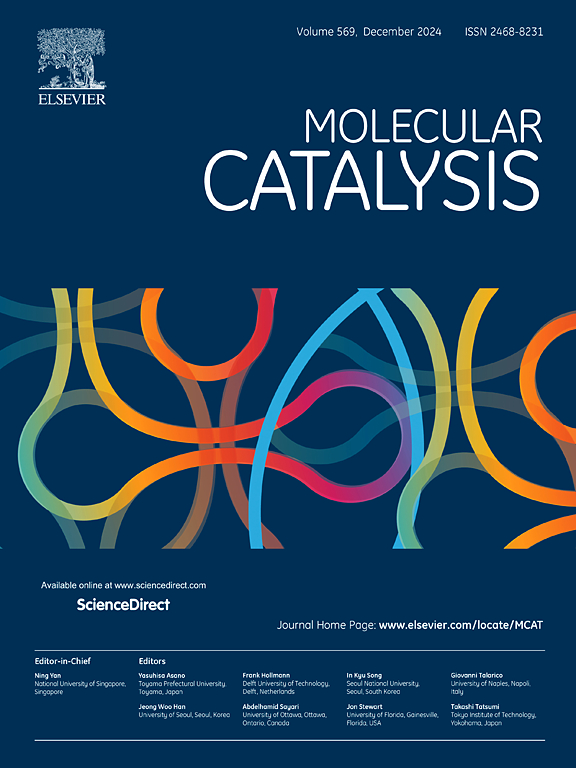负载锰沸石催化剂臭氧氧化甲苯的失活和再生过程表征
IF 4.9
2区 化学
Q2 CHEMISTRY, PHYSICAL
引用次数: 0
摘要
常温下臭氧催化氧化甲苯是一种很有前途的节能方法。然而,催化剂中毒和失活等挑战仍然是重大障碍。因此,了解催化剂的失活机制和再生对于优化催化氧化过程至关重要。研究了臭氧氧化甲苯过程中Mn/MOR催化剂的失活和再生过程。当锰负荷为1wt . %时,最高的甲苯去除率为92.3%,但经过8次实验循环后,催化性能下降到24.3%。催化剂失活的主要原因是甲苯降解过程中副产物的积累、Mn3+的损失和氧空位的减少。再生实验表明,热空气有效地氧化了中间产物,恢复了活性位点,恢复了94.2%的初始催化性能。此外,通过GC-MS分析推导了甲苯降解的可能反应途径。这项工作证明了这种失活催化剂回收的可能性,并为催化剂的全寿命管理提供了思路。本文章由计算机程序翻译,如有差异,请以英文原文为准。
Characterization of catalytic deactivation and regeneration processes in Mn-loaded zeolite catalysts for ozone oxidation of toluene
Catalytic oxidation of toluene by ozone at ambient temperature is a promising, energy-efficient method. However, challenges such as catalyst poisoning and deactivation remain significant obstacles. As such, understanding the deactivation mechanisms and the regeneration of catalysts is crucial for optimizing catalytic oxidation processes. This study investigates the deactivation and regeneration processes of Mn/MOR catalysts in the ozone-mediated oxidation of toluene. The highest toluene removal efficiency achieved was 92.3 % with a manganese loading of 1 wt. %, but after eight experimental cycles, the catalytic performance declined to 24.3 %. The deactivation of the catalyst was primarily attributed to the accumulation of by-products during toluene degradation, the loss of Mn3+, and the reduction in oxygen vacancies. Regeneration experiments demonstrated that exposure to hot air effectively oxidized intermediate products and restored the active sites, recovering 94.2 % of the initial catalytic performance. Additionally, the possible reaction pathway for toluene degradation was deduced through GC–MS analysis. This work demonstrates the possibility of recovery of this deactivated catalyst and provides ideas for whole-life catalyst management.
求助全文
通过发布文献求助,成功后即可免费获取论文全文。
去求助
来源期刊

Molecular Catalysis
Chemical Engineering-Process Chemistry and Technology
CiteScore
6.90
自引率
10.90%
发文量
700
审稿时长
40 days
期刊介绍:
Molecular Catalysis publishes full papers that are original, rigorous, and scholarly contributions examining the molecular and atomic aspects of catalytic activation and reaction mechanisms. The fields covered are:
Heterogeneous catalysis including immobilized molecular catalysts
Homogeneous catalysis including organocatalysis, organometallic catalysis and biocatalysis
Photo- and electrochemistry
Theoretical aspects of catalysis analyzed by computational methods
 求助内容:
求助内容: 应助结果提醒方式:
应助结果提醒方式:


